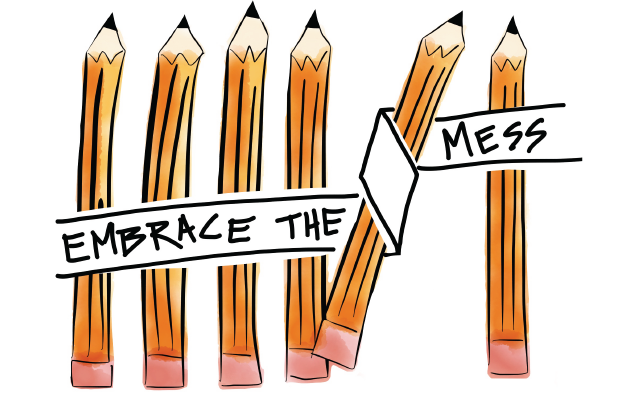Three passes
World class writers sit down and pour out beautiful prose in a single sitting, right? That’s the image I image I held in mind for many years and this belief is not only far from the truth but this belief crippled me as a writer. I would sit down to type and proceed to write at glacial speed, spending more time watching the cursor blink. But over many many years of reading about writers and reading about the craft of writing, I learned the truth: that the best of writers make multiple passes at their writing.
Recently, Neil Strauss shared his creative writing process in his weekly newsletter and he suggests breaking down the writing into three discrete passes. Each pass serves a different purpose. They differ in modes of thinking and vary in speed of execution.
- Second pass – edit and keep your reader/audience in mind
- Third pass – scrutinize your work
Get it all out … as quickly as possible
One of the most common mistakes is trying to write everything perfectly. As if each word was being etched in stone, or going straight to print.
During this first pass, you aim for banging out the writing — as fast as possible. Your goal is NOT perfection. Your goal is to brain dump and clear your working memory. You want to generate a mountain of writing that you can, in the subsequent phases, chisel and shape and smooth out. And don’t fear: you never show this writing to anyone (unless you want to, of course). This first draft is for your eyes, and your eyes only.
Think about your reader
This is where you start sculpting the clay of your book. You see the book not through your ego, which wanted to write the book, but through an ideal reader’s eyes.
Now that a heap of writing sits in front of you, what next? You shift your mode of thinking. In the previous pass, you were writing for yourself. But now, center your attention towards your audience. Try and view the writing from their perspective. Consider the clutter. Consider where you are losing their attention. Consider the reader and be prepared to toss out entire sentences — or even sections.
Welcome the haters
Note that hater-proofing isn’t just anticipating their arguments and defusing them ahead of time, but also checking to make sure your facts, research, and even spellings are correct. And your arguments are correct and unassailable.
Once you’ve consider your reader, you now put yourself in the position of your hater, your worst enemy. This is the time for you to really scrutinize your work, to find any chinks in your armor. This is the phase in which you get to play devil’s advocate. Basically, imagine stepping into the ring and boxing with a logical opponent, someone trying to poke holes in your writing, someone trying to expose you as a fraud. Anticipate the punches and tackle them head on.
Summary
Ultimately, the three phases creates some structure and within that structure lives creative freedom. And again, each phase serves a different purpose. At the beginning, you want to be your biggest cheerleader, rooting for yourself. Then, towards the end, you transition into your toughest critic.
